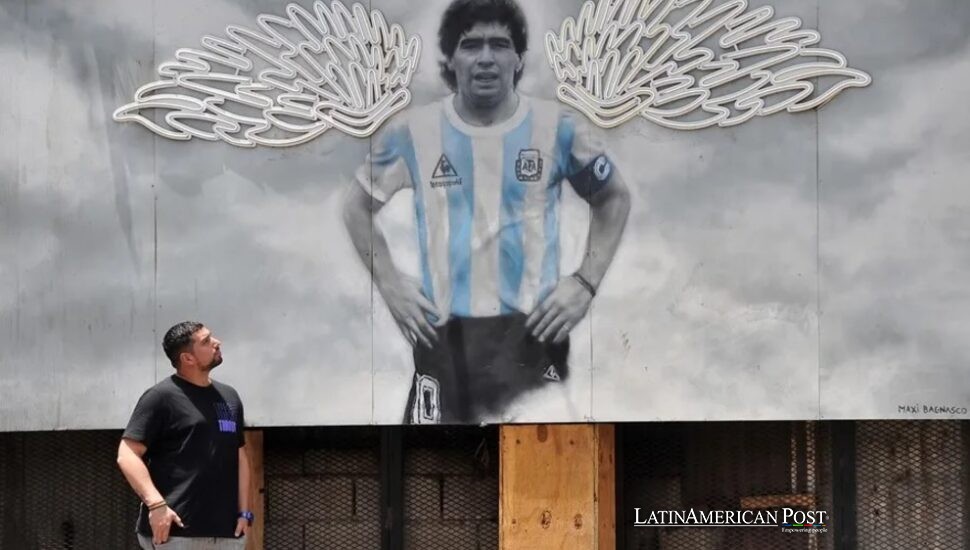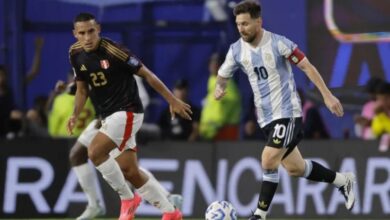Three Hidden Truths Revealed in Argentina During Maradona’s Ongoing Death Trial

The crucial trial regarding Diego Armando Maradona’s last days continues. It reveals potential medical negligence and poses disturbing questions about a significant football icon’s care. Even though a verdict did not happen, three critical findings have surfaced.
Preexisting Pathologies and Overlooked Warnings
Diego Armando Maradona, a name revered in Argentina and idolized in Italy—where his legendary stint in Naples immortalized him as a near-divine figure—remains a global icon even after his death on November 25, 2020. The court works to understand events that led to a patient’s death. This happens during a tough legal case. Seven healthcare workers face an accusation of simple homicide. The claim is that they had eventual intent. The trial continues for over a month. But the court made no final ruling. Each witness, besides every paper, increased the story’s complex nature. And the story now unsettles people in a world that loves football.
The issue is whether these professionals knew or should have known that Maradona’s precarious state required urgent and specialized care—care he may never have received. The case touches upon core themes of medical responsibility, patient rights, and the vulnerabilities of a public figure whose brilliance on the pitch masked an array of looming health perils. Regarding the disclosed details, three significant aspects define the present courtroom proceedings.
Foremost to the trial is the claim that Maradona’s precarious health state was common knowledge. A range of experts have specified a record of serious medical trouble reaching back years, and this trouble worsened during his last weeks. An autopsy revealed cirrhosis of the liver, pronounced cardiac abnormalities, chronic lung damage, and an alarming accumulation of fluid in his abdomen—indicative of a deteriorating body. One pathologist testified that Maradona’s heart weighed roughly twice the normal amount, flagging dilated cardiomyopathy and ischemic damage.
In the courtroom, prosecutors argued these urgent red flags were largely ignored. Several testimonies allege that the lead physician overseeing Maradona rebuffed critical diagnostic tests. One cardiologist claimed he tried to arrange a vital cardiac evaluation in September 2020 but was denied access. This process can identify hazardous health issues and may begin more robust, controlled treatment.
The testimony suggested that money or fame drove specific decisions. Lawyers must demonstrate the healthcare providers ignored Maradona’s serious risk factors. This disregard had to occur intentionally or through negligence. If proven, it could establish the threshold for “eventual intent”, a form of homicide in which someone knows danger looms yet fails to act or even facilitates the harmful outcome.
A House of Care or a House of Cards?
Between November 3 and November 11, 2020, Maradona underwent surgery for a subdural hematoma at Clínica Olivos. According to medical records, he emerged from the operation in a precarious but stable state. Soon afterward, a fateful decision was made. Rather than continuing rehabilitation in a specialized facility, Maradona would recover at a rented home in Tigre, under what is typically called “domiciliary care.”
This decision is one of the most hotly contested aspects of the trial. Family members have testified that, during a pivotal meeting, two options were placed on the table. One option involved keeping Maradona within a rehab facility. This facility would handle his many medical problems. Another selection involved moving him to a private place. Nurses would monitor him at all times. An ambulance could reach him fast. He would have access to specific medical gear. But the accused professionals seemed to like the home idea. They declared it workable and superior.
In reality, multiple witnesses paint a far bleaker picture of what awaited Maradona in Tigre. One neighbor testified that an ambulance was present for only the first two days; afterward, it vanished. Family and friends reported seeing no substantial medical apparatus to address crises like heart failure or respiratory distress. Nurses, whose role was crucial, allegedly stayed in a room too distant from the patient to intervene quickly.
All this leads prosecutors to argue that Maradona was effectively “abandoned to his fate.” The defense, however, contends that Maradona resisted or refused more intensive care. Lawyers also suggest that volatile moods, past substance dependencies, and the star’s mercurial nature complicated efforts to maintain consistent oversight. The court must decide if this defense is enough to absolve the indicted of responsibility, especially given the apparent dangers in letting such a critically ill man slip into relative isolation.
Allegations of Neglect and Prolonged Agony
Perhaps the most harrowing details revolve around what might have transpired on the day (and night) Maradona died. Autopsy experts noted signs that indicate a drawn-out period of distress, possibly spanning up to 12 hours. If this scenario holds true, it implies Maradona could have received some form of aid during that time—had it been available.
Additional forensic findings support the narrative that his condition had deteriorated over at least a week. A pathologist’s testimony described a “generalized edema from head to toe” that would have required roughly ten days to develop. The prosecution alleges that anyone medically trained and paying attention to Maradona’s fluid intake, diet, mobility, and general demeanor would have noticed this dangerous swelling.
These revelations present a grim image: one of the greatest football players of all time, champion of Argentina’s 1986 World Cup victory and celebrated hero of SSC Napoli, left without timely intervention in his final hours. Defense teams claim a more complex view exists. They note the difficulty of addiction recovery. Medical procedures possibly deviated or proved impossible because of Maradona’s decisions. They state that depicting healthcare providers as careless ignores the star’s erratic actions. This detail stopped people from observing.
For Maradona’s fans in Argentina and Italy, next to other places, the trial shows the harsh truths about what fame requires. He was loved for his skills on the field, yet Maradona lived a life of struggle and suffering. Within the courtroom, attorneys question if this football great did not get proper care or if it contributed to his downfall. This stress is clear. With grief besides fury, people watch from a distance. They sincerely wish to know how such a fantastic talent has decreased so much so quickly.
As the trial continues, these three areas exist: unappreciated medical issues, the choice of care at home, and reports of persistent neglect. There are more testimonies besides forensic data to come. Courts in Argentina are getting ready for more people who saw things happen. These people will bolster or reduce the strength of the lawyers’ case. Meanwhile, Maradona’s worldwide fans remain glued to each new revelation, torn between the heartbreak of losing their icon and the hope that truth will finally emerge.
Also Read: Brazil’s Women’s Football: Defying Bans, Embracing Future Triumph
No final ruling has been reached, and in the coming weeks promise even more revelations that could swing momentum in either direction. One fact, however, remains certain: The legend of Diego Armando Maradona will never be the same. From the humble streets of Villa Fiorito to the roaring stands of Naples and Buenos Aires, his legacy stands poised on a knife’s edge—between adoration for what he achieved and anguish over what might have been prevented.





